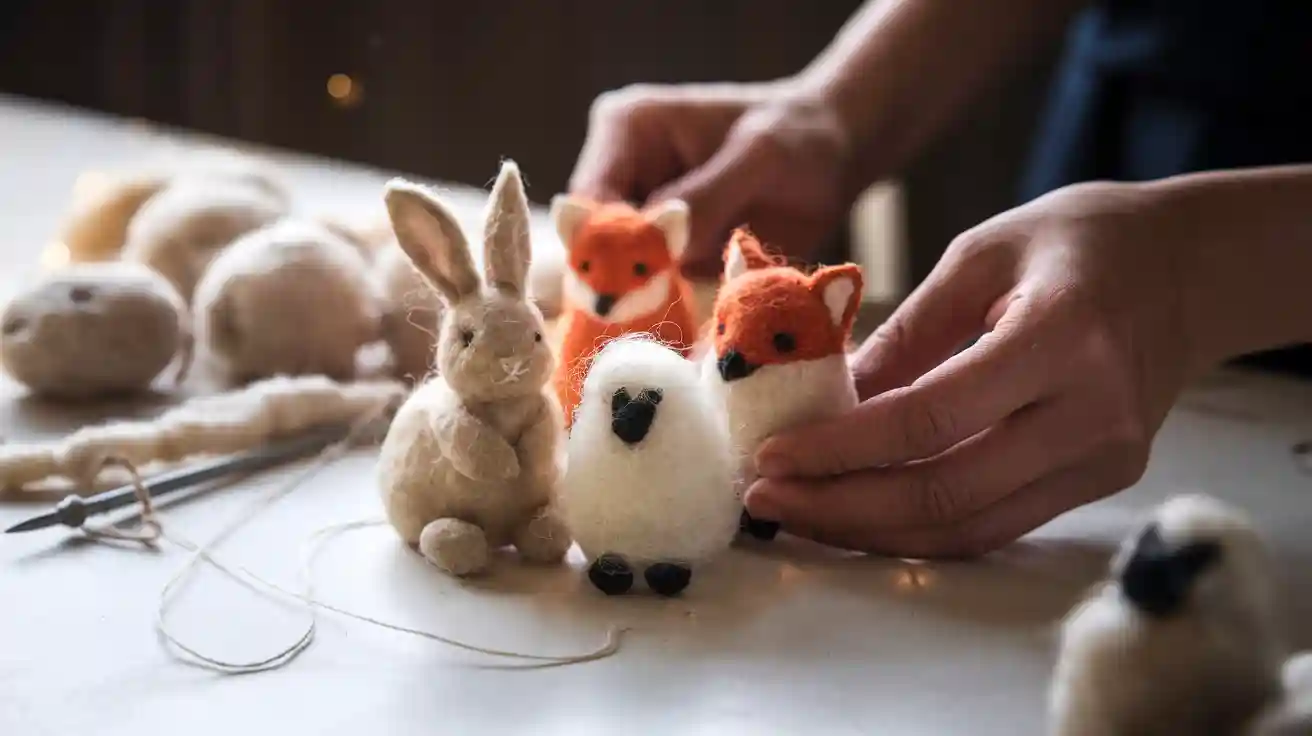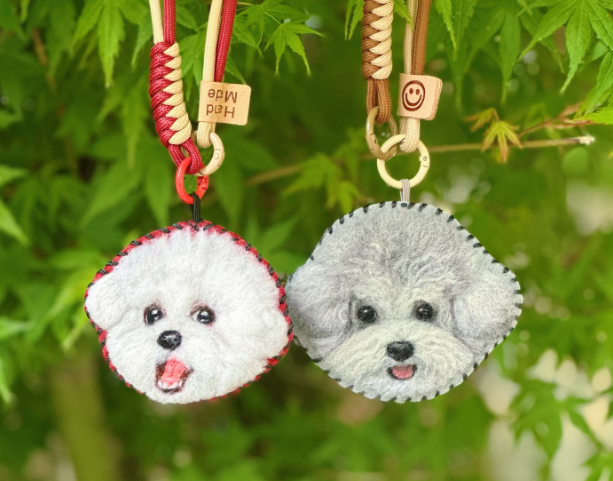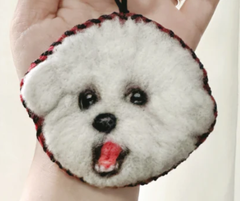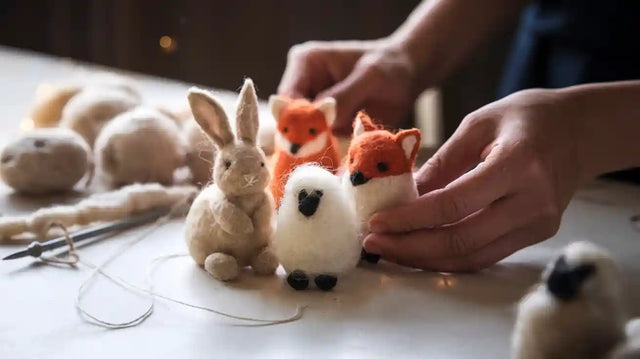What are felted wool animals and why do people love them

Felted wool animals are small figures made from wool fibers. People shape them by hand or with special needles. You can see their charm right away. Each one shows the artist’s skill and ideas. These animals feel soft and warm because of the wool’s texture. Many people love how wool felt helps artists make real-looking details. You can see tiny noses and fluffy tails.
Personalized crafts like felted wool animals are getting more popular. On Etsy, shoppers often look for special gifts or animal crafts. People search for things like crochet stuffed animals. Some even look for highland cow stuffed animals. Wool crafts give something special to everyone. You might want a unique pet figure or a cute animal to show off.
Key Takeaways
Felted wool animals are handmade. People shape them by poking wool fibers with special needles. This makes them soft, detailed, and look real.
Needle felting uses tools like felting needles and pipe cleaners. You build shapes step-by-step. This craft is fun and relaxing. Beginners and experts both enjoy it.
Different types of wool, like Merino and Corriedale, change how soft and strong the animals are. Picking the right wool makes your project better.
People love felted wool animals because they are special and unique. They feel nice and soft. They make great gifts and keepsakes.
Collecting or making felted wool animals helps you join a creative group. It connects you to a long tradition. It is calming and feels rewarding.
Felted Wool Animals
What They Are
You may wonder how felted wool animals are different. These small figures are made using a process called felting. First, you start with loose wool fibers. Then, you use a barbed needle to poke the wool many times. This makes the fibers stick together. You can shape the wool into almost any animal you want. The process lets you add layers and mix colors. This helps you make tiny noses, ears, and tails.
Felted wool animals are special because of their texture. The wool feels thick and soft. When you touch one, you feel the matted surface. This texture is not like knitting or crochet. You do not weave or sew the wool. Instead, you shape it by poking. Some artists put wire or pipe cleaners inside. This helps the animal stand or move its legs. You can see a lot of detail with this method.
Felting has been around for thousands of years. Long ago, nomads in Central Asia found that wool could turn into felt. They made felt by getting wool wet and pressing it together. They used felt for clothes, homes, and art. Today, people use a dry felting method called needle felting. This way became popular in the 1980s. It lets you make flat or 3D shapes. Many artists get ideas from Japanese kawaii culture. This style is cute and fun. When you make or collect felted wool animals, you join a craft with a long history.
Did you know? Felt is one of the oldest fabrics ever made. People have used wool for art and daily life for thousands of years.
Types and Styles
There are many types and styles of felted wool animals. Some artists make animals that look just like real pets. Others create fantasy creatures or cartoon-like animals. You might see tiny birds, playful cats, or even dragons. The style depends on what the artist wants to make.
Here are some popular types you can find:
Miniature Pets: Artists can make a small version of your dog, cat, or rabbit. These are great for gifts or memories.
Wildlife Figures: You can find lions, bears, foxes, and more. These show the artist’s skill at making lifelike details.
Fantasy Creatures: Some artists use wool to make unicorns, dragons, or other magical animals.
Cartoon and Kawaii Styles: These animals have big eyes and cute faces. They look friendly and fun.
Seasonal and Holiday Designs: You might see felted wool animals dressed for Christmas, Halloween, or other holidays.
Some felted sculptures are bigger or have more details. Some animals can stand up or hang as ornaments. Others are part of a group scene. There are so many things you can make.
If you want to buy or sell felted wool animals, PawImprint is the best place online. Many artists have shops there. You can look at hundreds of special pieces, from needle felted animals to custom pet portraits. This site helps you find artists from all over the world.
Felted wool animals let you be creative and enjoy tradition. You can collect them, give them as gifts, or try making your own. Each one tells a story with wool and the artist’s ideas.
Needle Felted Animals: The Process

How Needle Felting Works
Needle felting lets you turn loose wool into solid shapes. You use a special needle with tiny barbs along its shaft. When you push this needle through wool, the barbs catch and tangle the fibers. Each time you stab the wool, the fibers lock together more tightly. This process lets you sculpt the wool into any shape you want.
Here is a step-by-step guide to making needle felted animals:
Gather your supplies. You need a felting pad, felting needle, pipe cleaners, scissors, core wool, colored wool, craft eyes or beads, and pins.
Make the head, muzzle, and nose. Wrap wool around a pipe cleaner to form the head. Shape the muzzle and snout, then add black wool for the nose.
Add the eyes. Use wool, beads, or craft eyes. Secure them with glue if needed.
Make and attach the ears. Felt two small ears, then pin and attach them to the head.
Make the body and attach the head. Roll and felt wool for the body. Connect the head using the pipe cleaner.
Make the legs, paws, and tail. Cut pipe cleaners, wrap them with wool, and shape the details.
Attach the legs and tail. Position them on the body and secure with more wool.
Tip: The more you stab the wool, the denser and stronger your animal becomes. Patience helps you get smooth, solid shapes.
Tools and Techniques
You need the right tools for needle felting projects. The main tool is the felting needle. These needles come in different sizes for shaping and adding details. You can use a single needle for small areas or a multi-needle holder for faster work.
Tool Category |
Examples and Uses |
|---|---|
Felting Needles |
Single needles for detail, multi-needle holders for shaping, different gauges |
Felting Mats |
Foam mats or wool mats to protect your work surface |
Cutting Tools |
Scissors for trimming and shaping wool |
Detailing Tools |
Metal tools, clay shapers, and styluses for adding texture |
Specialty Needles |
Reverse needles for pulling out wool, long needles for attaching limbs |
Protective Surfaces |
Self-healing mats to keep your table safe |
You also need different types of wool. Core wool forms the base, while colored wool adds details. Always use the right needle for your wool type. If you use the wrong needle, you might get uneven surfaces or break your needle.
Safety matters when working with sharp needles and wool. Handle needles carefully to avoid finger injuries. Work in a well-lit area and take breaks to rest your hands. If you have wool allergies, try hypoallergenic wool or wear gloves.
Note: Start with simple shapes and coarse wool if you are new to needle felted animals. This helps you learn the basics before moving to advanced designs.
Needle Felting Wool: Materials
Wool Types
When you begin needle felting wool animals, you will see that wool is not all the same. Each kind of wool has its own special features. These features change how your animal looks and feels. Some wool is soft and smooth. Other wool is rough and strong. You can pick the best wool for your project if you know about the most common types.
Merino wool is very soft and smooth. It is good for fine details and a neat finish. Many artists use Merino wool for the outside of their animals.
Corriedale wool is rougher and firmer than Merino wool. It is great for making the main shape. Beginners like Corriedale wool because it felts fast and keeps its shape.
Mountain sheep wool is thick and tough. It works well for big or strong animals. It is a good base for your project.
Alpaca wool is soft, warm, and does not cause allergies. It comes in many natural colors and feels fancy.
Angora wool is very fluffy and light. You can use it to make soft, fuzzy parts.
Mohair comes from Angora goats. It looks shiny and takes color well, so it is nice for bright shades.
Wool blends mix different fibers. This gives you a mix of softness, strength, or color.
Tip: Do not use fake wools for needle felting wool animals. They are harder to felt and not as good for the planet.
Material Benefits
Wool has many good things when you use it for needle felting wool animals. Wool fibers stick together easily. This makes it simple to shape and mold. You get a soft, natural feel that is nice to touch. Wool is also strong, so your animals last a long time.
Feature |
Wool Felt |
Polyester Felt |
|---|---|---|
Texture |
Soft, smooth, not shiny |
Rough, fuzzy, a little shiny |
Durability |
Lasts long, strong |
Rips easily, not as strong |
Shape Holding |
Keeps shape and stitches well |
Not as steady |
Flame Resistance |
Does not burn easily |
Can melt and burn skin |
Environmental Impact |
Grows back, breaks down naturally |
Does not break down |
Wool is a resource that grows back. Sheep grow new wool every year. This helps the earth when you pick wool. Wool felt breaks down in nature and is safe for pets. You can have fun making needle felting wool animals and know you are using a material that is pretty and good for the world.
Why People Love Them
Charm and Personality
Felted wool animals have a special charm that draws you in. Each one shows a unique personality. When you look at a felted animal, you see more than just a toy or decoration. You see the artist’s care in every detail, from the tilt of the head to the sparkle in the eyes. These animals can look playful, wise, or even a little mischievous. The soft texture of wool helps artists create lifelike features and expressions.
You can find felted wool animals that remind you of your own pets or favorite creatures. Many people choose to have custom pieces made. For example, Pawimprint’s Pet Portrait Custom Frame lets you turn your pet’s photo into a three-dimensional wool portrait. Skilled artisans use needle felting to capture your pet’s look and spirit. You can pick the frame size, color, and background. You can even add special touches like a collar or toy. Each portrait becomes a one-of-a-kind keepsake that tells your pet’s story.
A custom felted wool portrait can become a cherished gift. It celebrates the bond you share with your pet and brings comfort and joy for years.
Creativity and Collecting
When you collect felted wool animals, you join a world of creativity. Artists use wool to make animals in many styles, from realistic to cartoon-like. You can find tiny birds, wild foxes, or even magical creatures like dragons. Some people collect these animals because they love the art. Others enjoy the stories each piece tells.
You can also create your own felted wool animals. Needle felting is a craft that welcomes beginners. You start with simple shapes and learn new skills as you go. The process feels relaxing and rewarding. Many people say that making felted animals helps them feel calm and focused. You can join online groups or local clubs to share ideas and learn from others. This craft brings people together and helps you express your imagination.
Felted wool animals often become more than just decorations. They serve as keepsakes, memorials, or thoughtful gifts. Many pet owners order custom wool portraits to remember a beloved animal. These pieces can include special details, like a favorite toy or a nameplate. Customers often share how much comfort these keepsakes bring. Some say the likeness is so close, it feels like their pet is still with them.
-
You can choose from many types of keepsakes:
3D full-body pet portraits
Keychains or ornaments
Framed wool pictures
Custom car decorations
Each piece is made with care and attention, making it meaningful and personal.
Tactile Appeal
Felted wool animals invite you to touch and hold them. The wool feels soft, dense, and warm in your hands. When you squeeze or stroke a felted animal, you notice the gentle, smooth surface. This texture comes from the way artists compress and shape the wool fibers. The result is a cozy, comforting feel that many people find soothing.
The sensory qualities of wool add to the appeal. Handling felted animals can help you relax and feel calm. Scientific studies show that touching soft wool can lower stress and bring a sense of peace. The natural warmth and texture of wool make these animals pleasant to hold. Some artists even add small bells or other features inside, giving you a layered sensory experience.
Sensory Benefit |
How It Feels or Helps |
|---|---|
Softness |
Comforts your hands and mind |
Warmth |
Feels cozy and inviting |
Gentle friction |
Soothes skin and calms nerves |
Durability |
Holds shape and lasts a long time |
You may notice that felted wool animals can help you focus or feel grounded. The act of making or holding them can be meditative. This is why many people keep them on their desks or in special places at home.
Many people say that felted wool animals help them feel calm and happy. The simple act of touching wool can bring comfort, making these animals special in daily life.
Felted wool animals are fun because they look cute and feel soft. People like making them because it is relaxing and helps you show your ideas. You can join groups, watch simple videos, and use kits to learn how to make wool animals. Custom things, like Pawimprint’s Pet Portrait Custom Frame, let you turn wool into a special memory of your pet.
Try new ways to make wool animals.
Collect cool wool animals or make your own.
Show your wool animals to friends.
Enjoy making things with wool and create memories you will remember.
FAQ
How do you care for felted wool animals?
Keep your felted wool animals away from water and direct sunlight. Dust them gently with a soft brush. If needed, spot clean with a damp cloth. Avoid squeezing or pulling on small parts.
Can you customize a felted wool animal to look like my pet?
Yes! Many artists offer custom orders. You can send photos of your pet. Artists use these photos to match colors, markings, and even add accessories. Pawimprint’s Pet Portrait Custom Frame is a great example of this service.
Are felted wool animals safe for children?
Felted wool animals are usually for display. Small parts can pose a choking hazard. Always check with the maker before giving one to a child. Supervise young children when they handle these items.
What makes needle felted animals different from other stuffed animals?
Needle felted animals use wool fibers shaped by hand with special needles. You get more detail and texture than with sewn or crocheted toys. Each piece feels unique and shows the artist’s skill.
How long does it take to make a felted wool animal?
The time depends on size and detail. Small, simple animals may take a few hours. Detailed or custom pieces, like pet portraits, can take several days or weeks. Artists work carefully to capture every feature.

